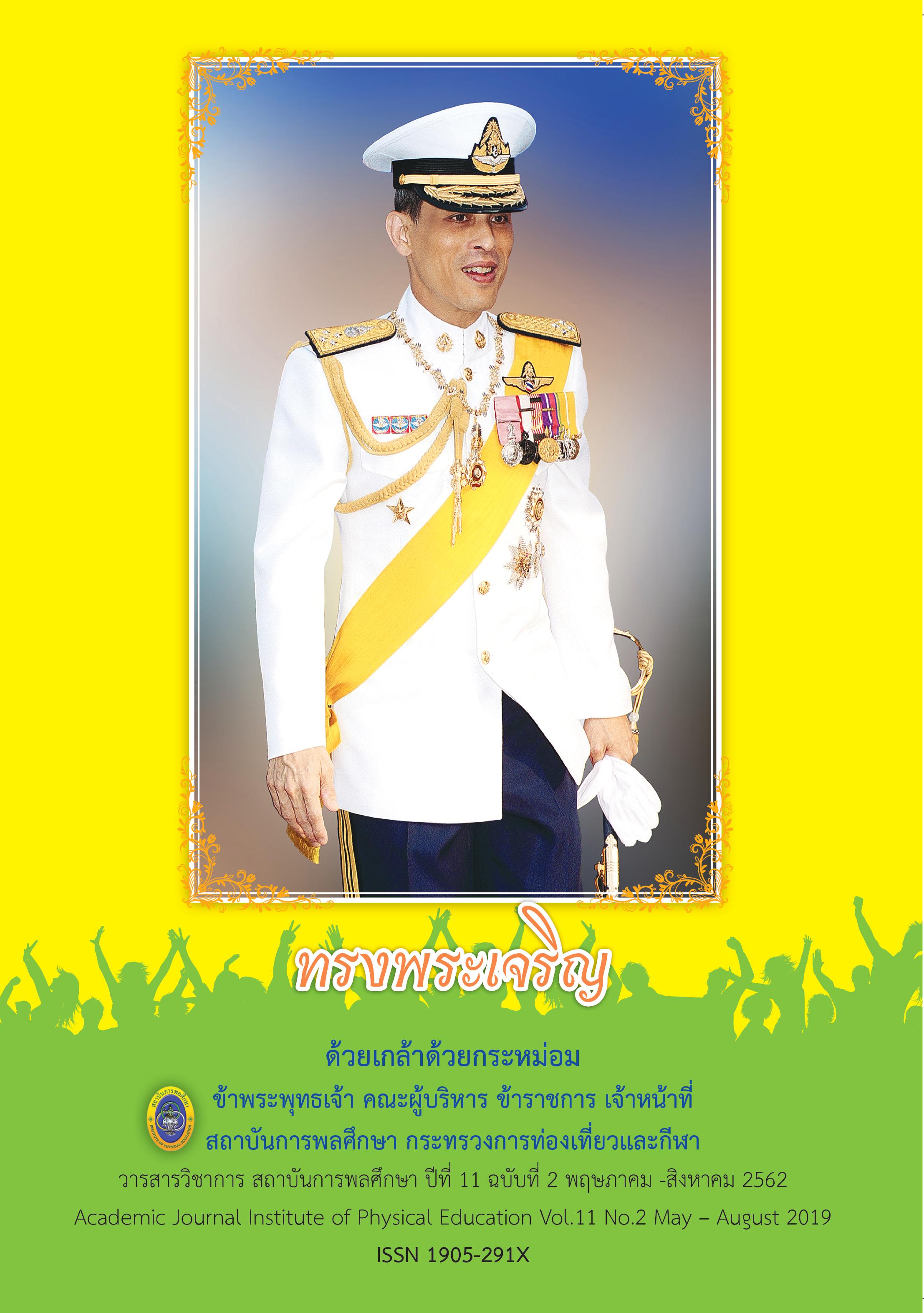BUILDING AN GENERAL MOTOR ABILITY ASSESSMENT TESTING EQUIPMENT FOR TAEKWONDO PLAYERS
Main Article Content
Abstract
Movement skill is essential for athletes. One of physical fitness factors which can improve movement skills in taekwondo players is eye-foot coordination. At present, there is no testing equipment that can directly measure eye-foot coordination. As a result, an eye-foot coordination testing equipment that can help classify kicking ability in taekwondo players is essential for players and coaches. The objective of the research is to build an eye-foot coordination testing equipment for taekwondo players. There were three steps in building the testing equipment. The first step was to do a literature review relating to eye-foot
coordination. From the literature review, eye-foot coordination was a combination of reaction time, accuracy, and opportunity. The second step was to build the testing equipment. The eye-foot coordination testing equipment was composed of stepping platform and a sandbag. The combination of the platform and the sandbag would interpret eye-foot coordination of taekwondo players. The testing equipment measured movement time and the number of step counts on which players correctly stepped. The final stage was to conduct validity and reliability. The IOC value to test for validity was 0.67, while the reliability tested by
20 players was 0.75. From the validity and reliability tests, the developed eye-foot coordination was able to use to measure eye-foot coordination of taekwondo players.
Article Details
The published article is a copyright of the Academic Journal of Thailand National Sports University. The passage appeared in each article in this academic journal is a perspective of each author which is not related to the journal. Each author is required to be responsible for all components of his/her own article. If there are any mistakes, each author must be responsible for those mistakes on his/her own.
References
Anshel, M. (1990). Sport psychology: From theory to practice. Scottsdale: Gorsush Scarisbrik.
Choi, H. H. (2006). Taekwon-Do and Physical Fitness. Retrieved February 12, 2009.
Cromwell, E. Ronita. (2007). Tae Kwon Do: An Effective Exercise for Improving Balance and Walking Ability in Older Adults. The Journals of Gerontology: Series A, 62(6), 641–646.
Hoeger, W.W.K. (1989). Lifetime physical fitness and wellness. Colorado: Morton Publishing.
Ketsiri, Y. (1997). Taekwondo. Bangkok: mitsamphan. [in Thai].
Kim, S. (1993). A Biomechanical Analysis of Taekwondo Front Thrust Kick. Dissertation Abstracts International, University of Wisconsin, Madison.
Kusonwong, P. (2009). Summer Universiade of taekwondo speech. Belgrade, Serbia.
Lee, K. (1998). Parental Expectation and Satisfaction Concerning Taekwondo Center in Taejon city and Chung-cheong Province. Dissertation Abstracts International, United States Sports Academy, The Republic of Korea.
Nimmit, W. (1997). The effect of agility and power training on the speed of roundhouse kick in Taekwondo. (Master’s thesis, Srinakharinwirot University). [in Thai].
Phadan, R. (2014). Fine moter ability of early childhood children enhancing patching and tearing creative art activity, (Master’s thesis). Srinakharinwirot Universiry.
Phromma, V. (2004). A comparison of effects of training muscle strength and muscle power upon round kick ability in Taekwondo. (Master’s thesis). Srinakharinwirot University). [in Thai].
Saladin, Kenneth. (2010). Anatomy and Physiology: The Unity of Form and Function. New York: McGraw-Hill Companies Inc.
Silamat, S. (2004). Principle of training for coach. Bangkok: chulalongkorn university press. [in Thai].
Sirianan, S. & Photchanaari, P. (2003). Taekwondo the martial art. Bangkok: mitsamphan. [in Thai].
Yotwong, V. (2004). Taekwindo training manual of Institute of Physical Education. Bangkok. Kurusapa Printing Press.


